Mitchell Leisen: The forgotten legacy of a queer filmmaker
 Tuesday, June 8, 2021 at 1:00PM
Tuesday, June 8, 2021 at 1:00PM 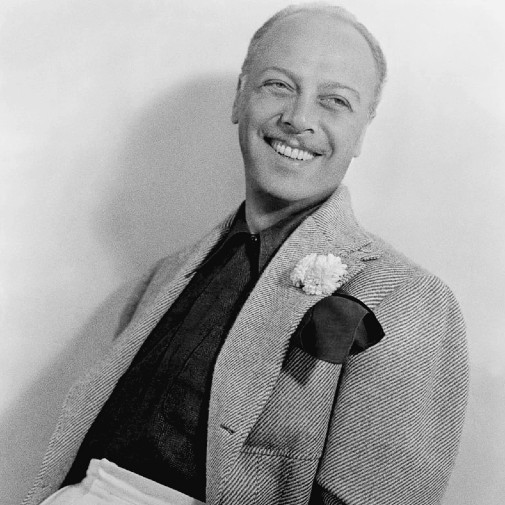
Sometimes, a writing project can take a life of its own, overwhelming you. That's what happened to me when trying to write about Old Hollywood director Mitchell Leisen. Initially, I pitched this piece to Nathaniel as a way of spotlighting an oft-forgotten talent whose best films feature in one of the Criterion Channel's latest collections. Later, as our 1946 journey began, the piece gained new value as a profile of the man who directed that year's Best Actress champion, Olivia de Havilland in To Each His Own. However, what most surprised me was how Leisen's story correlates with queer history and everything we celebrate and mourn during Pride month.
As I went down a rabbit hole of research, the marvelous writings of Mark Rappaport, David Melville, Farran Nehme, and others revealed the complex case. That of an acclaimed queer artist whose legacy was systematically tarnished, if not downright erased, in a gesture of barely concealed homophobia…
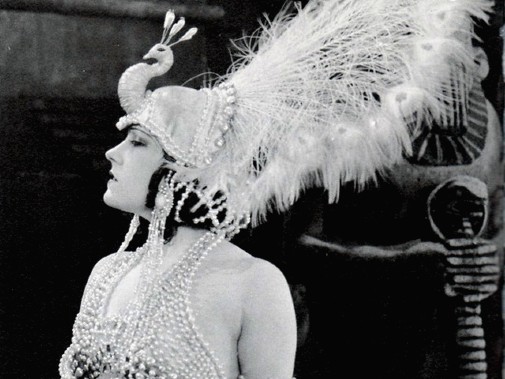 MALE AND FEMALE (1919)
MALE AND FEMALE (1919)
James Mitchell Leisen was born into an affluent middle-class American family in 1898, right at the twilight of the 19th century. Suburban peace and familial security weren't lasting factors of his childhood, however. By the time Leisen was five, his parents were divorced. Burdened with a club foot, the young man wasn't prone to sporting hobbies, preferring to spend his days looking after flowers or staging great theatrical productions starring his favorite toys on sets of painted paper. During World War I, he served as a drill officer and later found work related to architectural studies. Still, an office job quickly bored young Mitchell, inspiring him to leave his Chicago home to go live in the developing film industry town of Hollywood.
During a dinner party, he caught the attention of Jeannie MacPherson, a movie screenwriter who worked with Cecil B. DeMille. Through this acquaintance, Leisen was hired to devise some outrageous Ancient World outfits for Gloria Swanson to model in DeMille's latest period epic Male and Female. It's important to note that while Leisen's career in Tinseltown started in the costume department, the man was not a trained dressmaker. Learning as he worked, Leisen accumulated screen credits with vertiginous speed. By the mid-1920s, he was a well-established designer, having dressed Swanson, Mary Pickford, Natacha Rambova, Douglas Fairbanks, and many other greats.
He was better equipped to designing sets, and that's what he started doing once his ambitions outgrew the work of a costume designer. From then on, he became Cecil B. DeMille's go-to art director, devising the look of such opulent productions as the deliriously vulgar Madam Satan and the orgiastic hedonism of The Sign of the Cross. You got to love the excess of the Pre-Code period and its cinema's drunken need to shock, seduce, inflame the humors with jumping hormones. It's a pity that the majority of Leisen's career as a director happened after the implementation of the new Hays Code of 1934. One wonders what lewd camp spectacles he would have created otherwise. He directed some extravagant pictures, nonetheless.
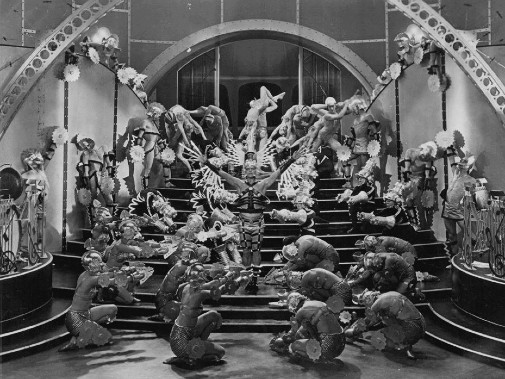 MADAM SATAN (1930)
MADAM SATAN (1930)
The man's taste for grand imagery was, in part, a product of De Mille's tutelage. Leisen learned how to run a movie shoot and use the camera with as much ease as he already employed the pencil. Since he started in the silents, Leisen learned filmmaking as an essentially visual artform. DeMille reportedly told him: "The camera has no ears. If you want to say it, get it on the screen." Leisen would take the words to heart while philtering his mentor's ethos through an aesthetic more attuned to gentle grace and elegance than bombast. Still, the beginning of his career as a director happened in fits and starts, through experiments and a bit of corporate pressure.
During the transition to the talkies, many studios started importing talent from the stage - not only actors but writers and directors, too. Stuart Walker was a Broadway professional who Paramount hired to direct a couple of new movies starring up-and-coming stars Claudette Colbert, Fredric March, Cary Grant, and Carole Lombard. To help the movie novice, the studios designated Leisen as a co-director. Quickly, it became apparent that DeMille's former art director was calling all the shots and the studio decided to give him a chance to helm a picture solo. That production was Cradle Song, a 1933 flick about a nun's half-romantic, half-maternal fixation on a pretty young orphan. The lead was played by Leontine Sagan, star of one of the most notable queer films of the 1930s, German lesbian drama Mädchen in Uniform. From the start, the cinema of Mitchell Leisen was brimming with queerness.
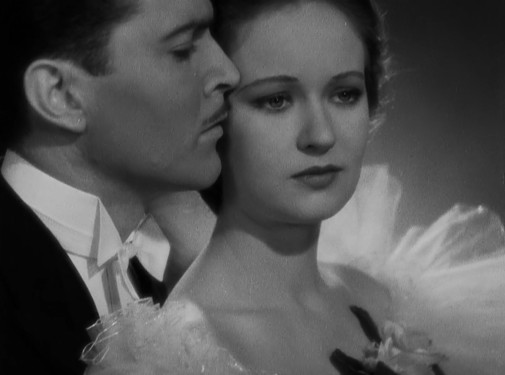
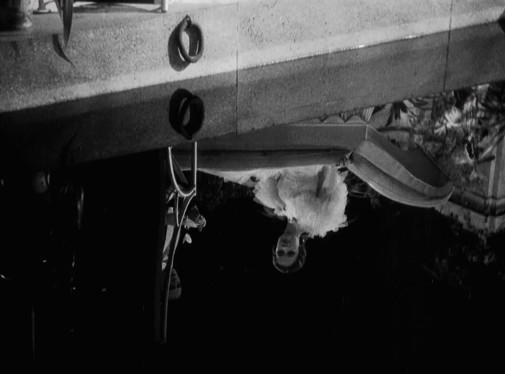
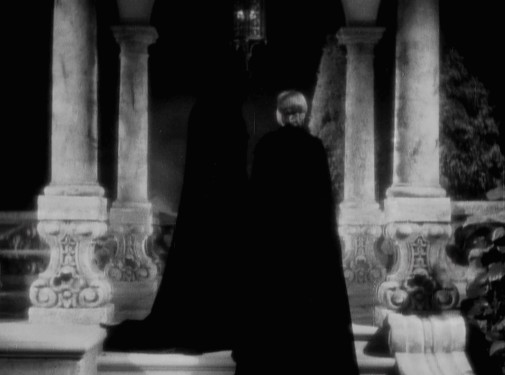 DEATH TAKES A HOLIDAY (1934)The next year, Leisen traded the nun's habit for the Grim Reaper's shroud, adapting Death Takes a Holiday from stage to screen. Modern audiences will be more familiar with its 1998 remake Meet Joe Black, but it should be noted that the original is much better. In any case, the central romance is a morbid jewel of bizarre attractions. Fredric March's Death behaves as an aloof entity whose perspective is decidedly inhuman, while his love interest, Evelyn Venable's Grazia, is a lady with a fixation on the beyond that verges on Byronic. The end could be seen as a metaphor for suicide or the sublimation of desire over life. It represents the human rendition to a love so strange, yet so strong, that it transcends the natural order. Again, it's not difficult to find queer readings in Leisen's movies.
DEATH TAKES A HOLIDAY (1934)The next year, Leisen traded the nun's habit for the Grim Reaper's shroud, adapting Death Takes a Holiday from stage to screen. Modern audiences will be more familiar with its 1998 remake Meet Joe Black, but it should be noted that the original is much better. In any case, the central romance is a morbid jewel of bizarre attractions. Fredric March's Death behaves as an aloof entity whose perspective is decidedly inhuman, while his love interest, Evelyn Venable's Grazia, is a lady with a fixation on the beyond that verges on Byronic. The end could be seen as a metaphor for suicide or the sublimation of desire over life. It represents the human rendition to a love so strange, yet so strong, that it transcends the natural order. Again, it's not difficult to find queer readings in Leisen's movies.
Following those early efforts came a period in his filmography defined by the then very popular screwball comedy genre. What made Leisen's examples of the genre so different from the majority was how he sacrificed frenetic energy in favor of glossy sorrow. There's an undercurrent of sadness shaping every laugh into something world-wearier and more complicated. Furthermore, his close-ups and gliding camera motions confer a smooth elegance to the proceedings, often filming faces within frames of draped couture or hazy reflections. In Hands Across the Table, a drunken cab ride feels like a predecessor of In the Mood for Love as Carole Lombard's romantic disappointment, her unfulfilled yearning, shines in close-up before a background of fuzzy streetlights.
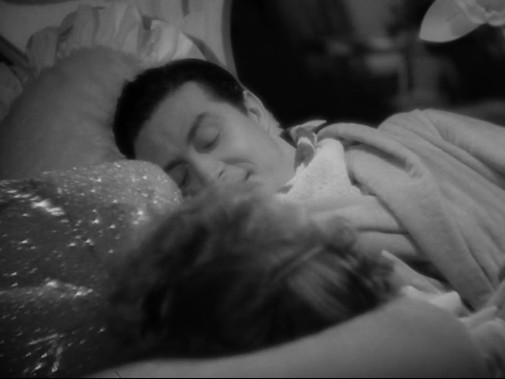
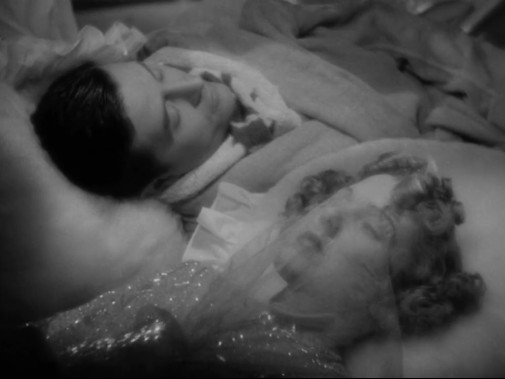
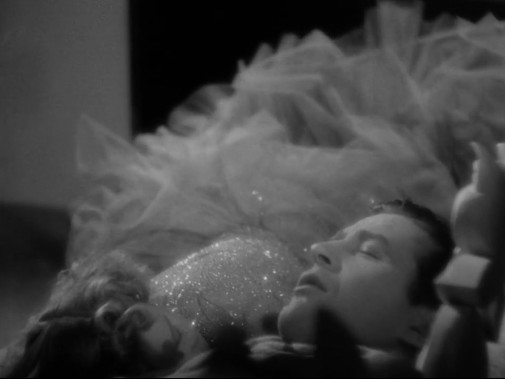 EASY LIVING (1937)
EASY LIVING (1937)
In Easy Living, Leisen's ultimate masterpiece, a romantic conversation between Jean Arthur and Ray Milland is staged in a bed, the camera looking down at the two actors. Upturned tulle skirtings, silken sheets, fuzzy covers, and a sequined bodice make the shot appear gauzily unreal. It's almost as if, in their amorous interaction, the leads have opened a portal to another cinematic dimension. It's a portrayal of blossoming intimacy that's as beautiful as it is viscerally affecting. While scripted by Preston Sturges, Easy Living's less hurried and more sincere than any of that man's brilliant directorial efforts. Unfortunately, the future maker of The Lady Eve and Sullivan's Travels didn't enjoy the edits Leisen did to his work, the streamlining of plot points, the pruning of excisable minor characters.
Preston Sturges, who wrote other films by Leisen including Remember the Night, would call him 'an interior decorator who couldn't direct', more interested in frocks than good screenwriting. He went so far as to name the director as one of the people whose incompetence made him want to direct his own scripts. Unfortunately for Leisen, Sturges wasn't the only one who felt this way. As the war years approached, Paramount assigned some scripts by Billy Wilder and Charles Brackett to Leisen, starting a tumultuous partnership that left no one happy. When David Chierichetti wrote Mitchell Leisen: Hollywood Director, he interviewed several people who had worked with the man, including Wilder. He had this to say:
All he did was he fucked up the script and our scripts were damn near perfection, let me tell you. Leisen was too goddamn fey. I don't knock fairies. Let him be a fairy. Leisen's problem was that he was a stupid fairy".
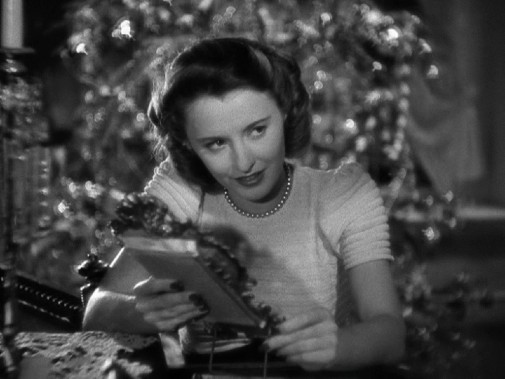
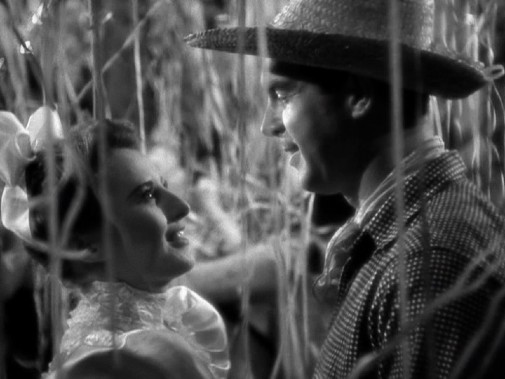
 REMEMBER THE NIGHT (1940)
REMEMBER THE NIGHT (1940)
One need not be a genius to read homophobia in Wilder's words or Sturges' pithy comments. For many, their horrible words became the most-known judgments of Leisen’s entire career and worth as a filmmaker. Wilder’s dislike was especially destructive. Also, if you assume Mitchell Leisen made extensive efforts to hide his homosexuality from colleagues (as many more did in the days long before gay liberation), let me assure you that wasn’t the case.
Leisen was married in 1927 to Sondra Gahle, an aspiring opera singer, but the director made no secret of his non-heteronormative proclivities. He and his wife often lived in separate cities, sometimes separate continents, and some dear confidants such as Carole Lombard often called Leisen their girlfriend. Furthermore, Leisen had multiple affairs with men. The most known liaison was with ballet dancer Billy Daniels, whom he met during the filming of The Big Broadcast of 1938, when Daniels was playing a sailor. The relationship lasted decades, and Leisen went as far as starting a company with his paramour to promote the younger man's artistic pursuits. If Leisen's movies weren't as successful, this might have posed a problem, but Paramount made sure to protect their cash cow, who, by the beginning of the 40s, was one of their more lucrative – and better paid – directors.
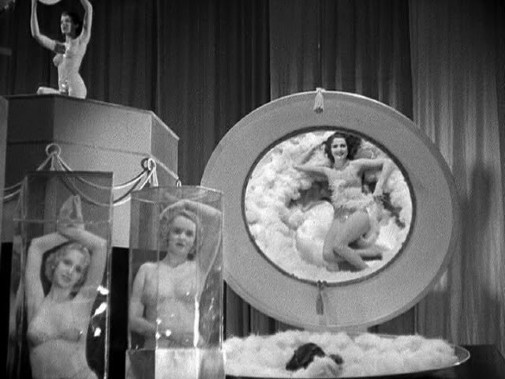
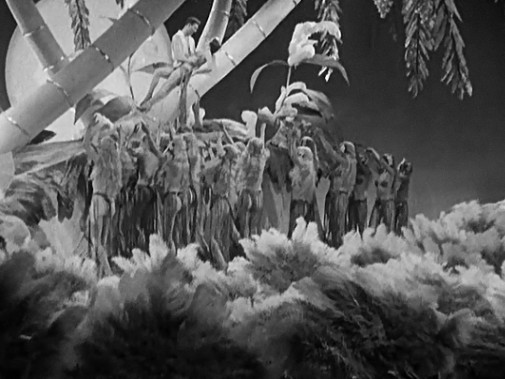
 MURDER AT THE VANITIES (1934)
MURDER AT THE VANITIES (1934)
It's also exceedingly hard to look at Leisen's filmography and ignore the elements of gay camp or the blatant transgressions of gender norms littered throughout Murder at the Vanities is so salacious in its confections of glittery eroticism it dives headfirst into camp, crashing magnificently on its face. There's a passage where women pose inside giant cosmetic products, a romantic hymn to marijuana, a male lead showing off his body in a shredded romper to a gaggle of thirsty chorus girls. Frenchman's Creek is another blatant example, telling the story of a noblewoman turned pirate mistress who saves her beloved by cross-dressing as a man. Later on, there's also a pirate ballet brimming with drag extravagance. One can see why straight-laced critics would sneer at such excess, but I, for one, revel in it. The man didn't hide that he was queer, whether he was attending a party or directing a movie.
Despite the whiffs of machismo and prejudiced hate, the most significant source of Wilder's venomous ire is said to have been Leisen's handling of 1941's Hold Back the Dawn. Considering the flick's final form, it's easy to see where Leisen twisted his screenwriter's acidic misanthropy into a more melancholic sense of forlorn, deep yearning, and bruised compassion. While Wilder might have made a border town's criminals, tricksters, and lowlifes into subjects of vicious cynicism, Leisen extends generosity towards them. In the film's most infamous departure from the script, a confessional monologue Charles Boyer's character performs to the audience of an unsuspected cockroach was entirely excised. The actor felt foolish talking to the bug, and Leisen agreed. Wilder was furious. Still, Hold Back the Dawn was nominated for the Best Picture Oscar, so some people liked it.
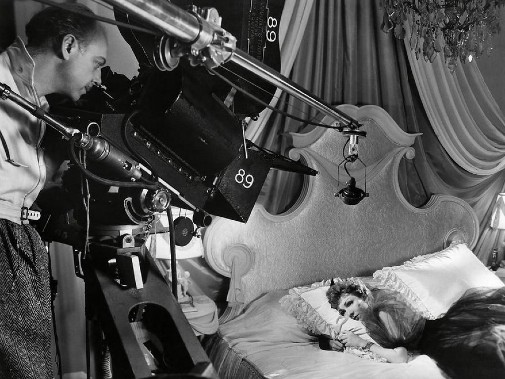 MIDNIGHT (1939)
MIDNIGHT (1939)
It's also interesting to compare Wilder's later Parisian comedies as a director – Sabrina, Love in the Afternoon, and Irma La Douce – with a similar project he wrote that was directed by Leisen. By my account, 1939's Midnight is miles better than any picture in that lackluster Wilder tercet, which I credit to the costume designer turned director's privileging of character over wordplay. He views romance as an organic relationship rather than a battle of the sexes. His portrayal of the City of Lights is that of a frothy kingdom of effervescent dreams, blessed with glitzy sights and infinite possibility. Leisen was uninterested in forced conflict and even less invested in realism. That's why his hallucinatory Paris feels somehow more concrete and lived-in than the gritty studio facsimile found in something like Irma La Douce.
I'm not trying to say that Leisen was a better filmmaker than Wilder and Sturges, just that the vitriol the later men felt for the other doesn't wholly correlate to a bastardization of their scripts. Sometimes, as in Midnight, I think Leisen did a better job than Wilder himself could have done. Still, nobody's perfect, and there's a lot of flotsam across Leisen's long career. Historians like Steven Bach snidely referred to him as competent but devoid of any sense of material and, even as I defend Leisen's craft and fight against such condescending summations of his work, I can admit there's some truth to that. The man had little to no sense of rhythm, and his pictures often moved at erratic paces. Even the best ones suffer from this, though sometimes, narrative arrhythmia can be a blessing in disguise.
As it happens, a lot of Leisen's flicks don't belong to any definite genre, floating through tonal registers on gossamer wings. The lack of structural sharpness, the love for elliptical edits, hid the radical nature of these movie transfigurations, creating the illusion of cohesion. Watching something like the feminist noir No Man of Her Own, we may think we're watching a thriller of deception before it falls into melancholic romance and then becomes a murder mystery. There's no whiplash because, for the most part, the movements that transport us from one wildly divergent idea to another have been smudged. Furthermore, Leisen's cinema is bursting at the seams with complicated women who are never made to apologize for their eccentricities and who are rarely punished for going against the status quo. His many romance films are tales of equals learning to live with each other, often foregrounding female leads who ignore easier socially acceptable paths in favor of passionate affairs.
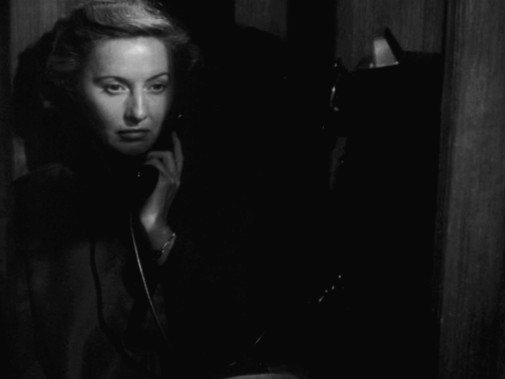 NO MAN OF HER OWN (1950)
NO MAN OF HER OWN (1950)
Does Carole Lombard's manicurist ever get punished for her shameless gold-digging in Hands Across the Table? Nope. Does Marlene Dietrich's quirky Broadway actress in The Lady is Willing ever need to make up for her vanity or the impulsiveness that made her adopt an abandoned babe as a single woman? Of course not. Is Barbara Stanwyck's pregnant fallen woman in No Man of Her Own ever made to pay for her unwed adventures or the scheme that finds her impersonating another woman for financial security? No, she's not. Even Joan Fontaine's doctor's wife in Darling, How Could You! isn't forced to apologize for her modern ways. When she capitulates to traditional motherhood, it's because she feels she wants to move on and try another kind of life, not because society demands it.
On another note, Leisen's fixation on costumes and sets was often beneficial. Exploring his directorial filmography, I grew accustomed to finding much to love in his visuals while cringing at the screenplays. 1945' Kitty almost falls into the same trap, transporting the Pygmalion narrative model to the 18th-century and still insisting on grafting a love story's happy ending to its conclusion. However, something special happens when you put Leisen in charge of such material. He feels particularly interested in exploring the historical milieu of Georgian England, filling the frame with the lines of Neoclassical architecture and the idiosyncratic fashions of the late-Rococo period. Because of that, Kitty becomes more about its time and place rather than the toxic romance and the melodrama. It thus emerges as an unlikely social satire about a world where nobility is a vacuous concept, easily transferable and devoid of any meaning. His visuals elevate the screenplay and help obfuscate its flaws.
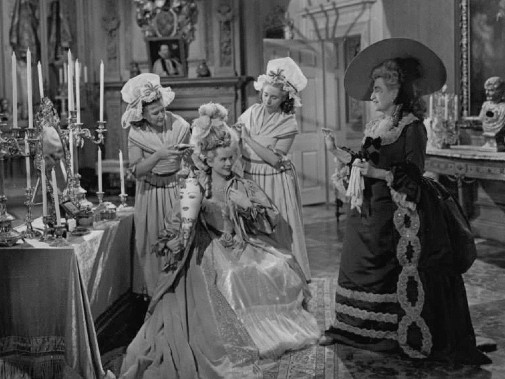 KITTY (1945)
KITTY (1945)
Despite the dismissals of Sturges and Wilder, some collaborators had nice things to say about Mitchell Leisen. For the most part, actors loved him, with Ray Milland showing great admiration for his director's interdisciplinary mastery. Even while writing this piece, I became awed at the man's deep pool of varied talents. He was a film director, a set and costume designer, club owner and promoter, writer, a part-time interior decorator, and accomplished couturier, pilot, painter, draughtsman, sculptor, and even stage director of variety revues. How did he do it all? Where did he find the time? Even after his movie career came to an end, he never stopped working, finding a place for himself as a TV director who did episodes for shows like The Twilight Zone. That's not surprising, considering he was always enormously versatile regarding the projects he helmed, from musicals to swashbucklers, war pictures, noir, melodrama, comedy, you name it.
Leisen died in 1972, at the Motion Picture Country Home, when he was 74. By that time, his films had been mostly forgotten, a Hollywood legacy either lost to time or smeared by those whose hatred for him probably stemmed from more than just artistic differences. What happened to this queer artist is a tragedy that should be rectified. If I can do nothing else during this Pride Month, I hope I have at least shed some light on the greatness of Mitchell Leisen and mayhap convinced one of you, dear readers, to give his movies a chance. It's criminal that this fascinating filmmaker has been so thoroughly left behind, even by cinephiles and classic movie lovers. Let's honor the man by remembering he existed, applauding the good work he did, and celebrating his queerness.
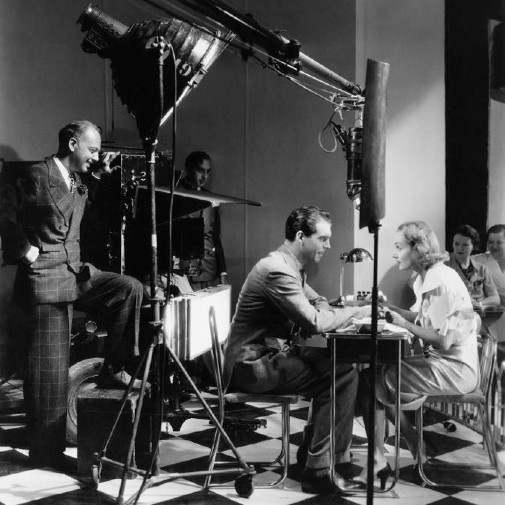 HANDS ACROSS THE TABLE (1935)
HANDS ACROSS THE TABLE (1935)
You can find ten of Leisen's films on The Criterion Channel, in a collection cheekily titled Style and Substance. Other works are less easy to find, though some of the lesser-known pictures are available on such sites as Youtube and Ok.ru.



Reader Comments (11)
Great piece. MIDNIGHT is one of the best screwball comedies of the 30s, probably one of the top... three or four. It should be much better known than it is, and it's pretty well known.
Petition to have new Pride shirts that say "Stupid Fairy" from Wilder's quote.
Never heard of this guy -- thanks for the article!
This was a lovely write-up. One of my favorite Leisen films is The Mating Season.
No wonder he treated Olivia d H's character in To Each His Own with no judgement.
Great piece that makes me want to check out all his films.
Thank you for this piece! I've loved ever Leisen film I've seen, though admittedly that's hardly comprehensive.
Amazing write-up, thank you so much for tackling a MAJOR director IMO. He is not second-tier, but right there with the best. I guess he didn't always necessary have the best scripts and that can be problem. But Wilder and Sturges have a meaner edge to them Leisen doesn't have and that's in no way a weakness. His empathy with the "outsider" aspects of his main characters is so strong and manages to come through not only in his direction of the actors but in the visuals as well. The camera is always following the actors the framing is always subtly evocative of their state of mind. He did have a strong take on his material that IMO is fully palatable.
One movie criterion has that I think is worth a look is "Darling How Could You?'". It's uneven and the A plot is unfortunately not the best. But the tender longing for family in his filming and the acting of Joan Fontaine is extraordinarily moving. A very underrated movie.
Remember the Night and Midnight owe just as much as the his direction as they do the scripts of Wilder and Sturges.
I've been watching a bunch of his films lately and he is a very underrated filmmaker. I've liked/loved a lot of the films I've seen from him. He may not be as famous as Preston Sturges and Billy Wilder but I think he deserves to be mentioned alongside them.
Thank you for shining a light on this important queer artist. Our best way to honor him is to not let the new queer greats like Claudio Alves ever fade from our minds!
Claudio, you delivered another gem. Never heard of his story, want to see all his movies now.
Thank you for your great article about the wonderful Mr. Leisen. Very fair and insightful. His career-long collaborations with the equally underrated Fred MacMurray rate high on my list of actor-director tandems. I do think that you underestimate his sense of comedic directorial rhythms. "Swing High Swing Low" has one of the most distinctive rhythms of any Hollywood studio comedy of the 30's, but it's pitched to its own languorous mood rather than simply timing the laughs, finding a very fortuitous choice of tone to my mind.